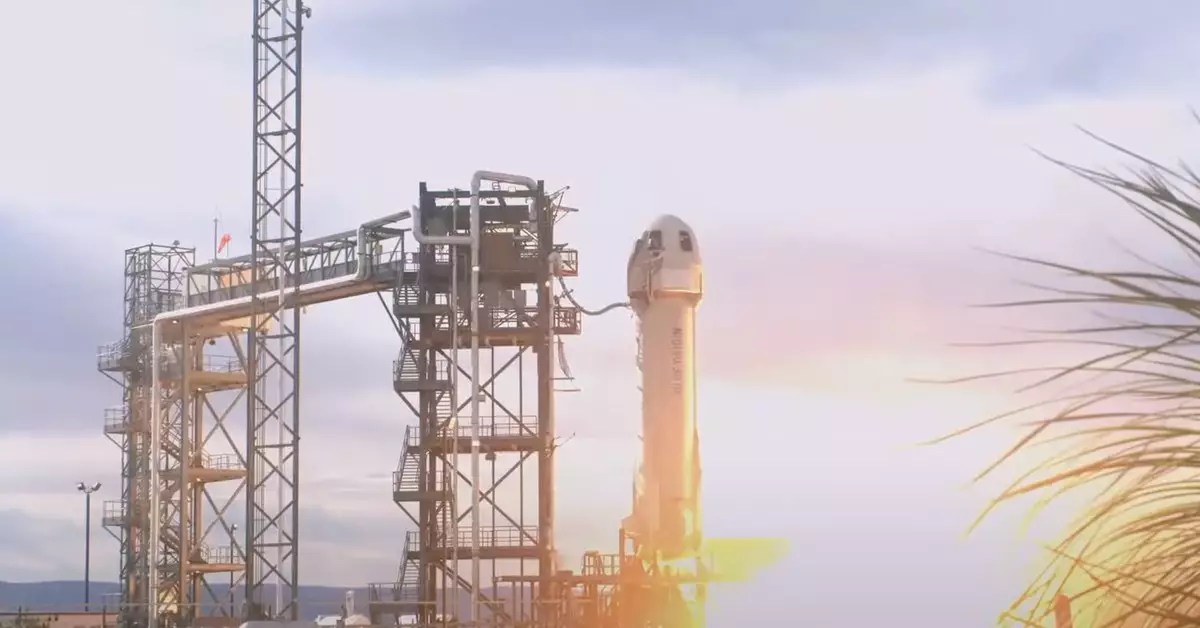Blue Origin, the space tourism company owned by Jeff Bezos, celebrated a major success with its 24th mission. The New Shepard rocket successfully launched from West Texas on Tuesday morning, showcasing impressive capabilities in space travel. The highlight of the mission was the safe separation of the booster and crew capsule mid-flight. Both components made a controlled landing back on Earth, marking a significant milestone for Blue Origin’s ongoing efforts to make space travel more accessible.
Liftoff of the New Shepard rocket took place around 25:44 in the livestream, captivating viewers with its raw power and technological prowess. The rocket soared to a maximum altitude of approximately 66 miles, allowing the uncrewed capsule to experience a brief journey into space. This achievement holds great significance as it demonstrates Blue Origin’s ability to propel objects to such heights with precision and control.
Overcoming Challenges
Originally scheduled for December 18th, the NS-24 mission faced setbacks due to cold temperatures and “ground issues” that required troubleshooting by the dedicated Blue Origin teams. However, the delayed launch only heightened the anticipation and excitement surrounding the mission. It is worth noting that setbacks and challenges are commonplace in the realm of space exploration, and the ability to overcome them showcases the perseverance and adaptability of the team at Blue Origin.
A Multitude of Payloads
The NS-24 mission carried an impressive 33 payloads to space, surpassing expectations and demonstrating the versatility of the New Shepard rocket. More than half of these payloads were from NASA, further reinforcing the collaboration between private companies and government agencies in advancing space exploration. Additionally, educational institutions had the opportunity to contribute payloads, further illustrating the educational potential and impact of Blue Origin’s endeavors.
Inspiring the Next Generation
One of the standout features of the NS-24 mission was the inclusion of 38,000 postcards from students around the world onboard the capsule. This gesture not only added a touch of human connection to the mission but also served as a source of inspiration for young minds interested in space exploration. By involving students in such endeavors, Blue Origin fosters a sense of enthusiasm and curiosity for space among the younger generation.
Learning from Past Experiences
Blue Origin’s previous mission, NS-23, was abruptly ended due to a booster failure. However, the setback proved to be an essential learning opportunity. Following an extensive investigation, the Federal Aviation Administration identified the issue as a “structural failure of an engine nozzle caused by higher than expected engine operating temperatures.” In response, the FAA imposed a series of corrective actions on Blue Origin, including the redesign of specific engine and nozzle components. This commitment to safety and continuous improvement highlights Blue Origin’s dedication to ensuring the utmost reliability and performance of its spacecraft.
While Blue Origin has already achieved the significant milestone of bringing humans to space, the success of the NS-24 mission propels the company even closer to its ultimate goal—offering space trips to a broader audience. As advancements in space travel technology continue, the dream of venturing beyond Earth’s atmosphere becomes increasingly attainable for individuals seeking to explore the cosmos. Blue Origin’s successes pave the way for a future where space tourism is no longer confined to science fiction, but a reality accessible to many.
Blue Origin’s 24th mission represents a significant step forward in the realm of space travel. Through a series of achievements, challenges overcome, and valuable lessons learned, the team at Blue Origin continues to push the boundaries of what is possible. By inspiring the next generation, fostering collaboration, and focusing on continuous improvement, Blue Origin sets a powerful example for the future of space exploration. With each successful mission, the dream of space tourism becomes a little bit closer to reality.


Leave a Reply